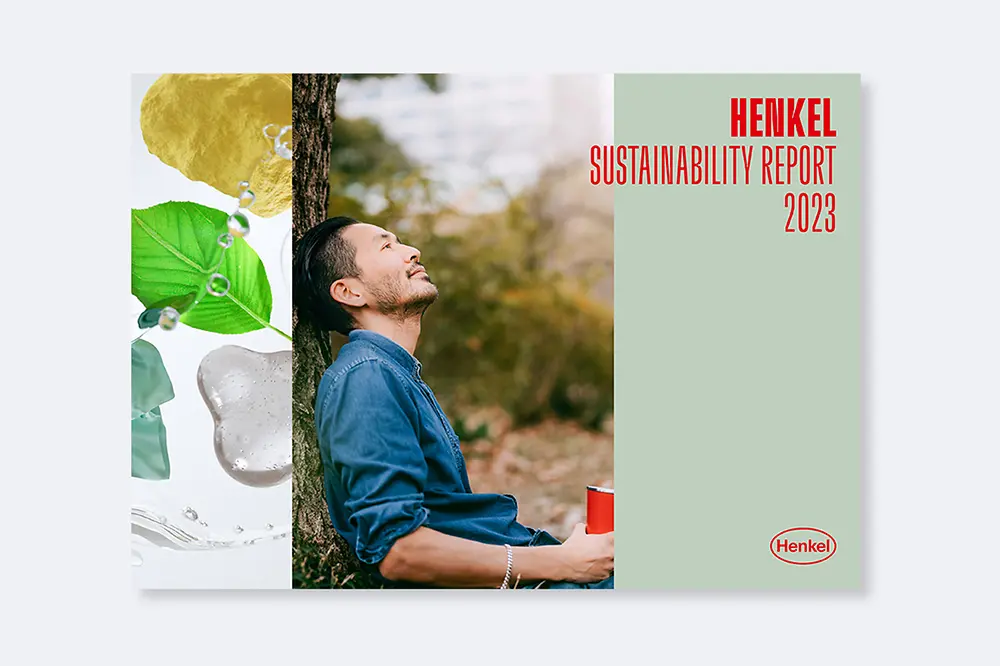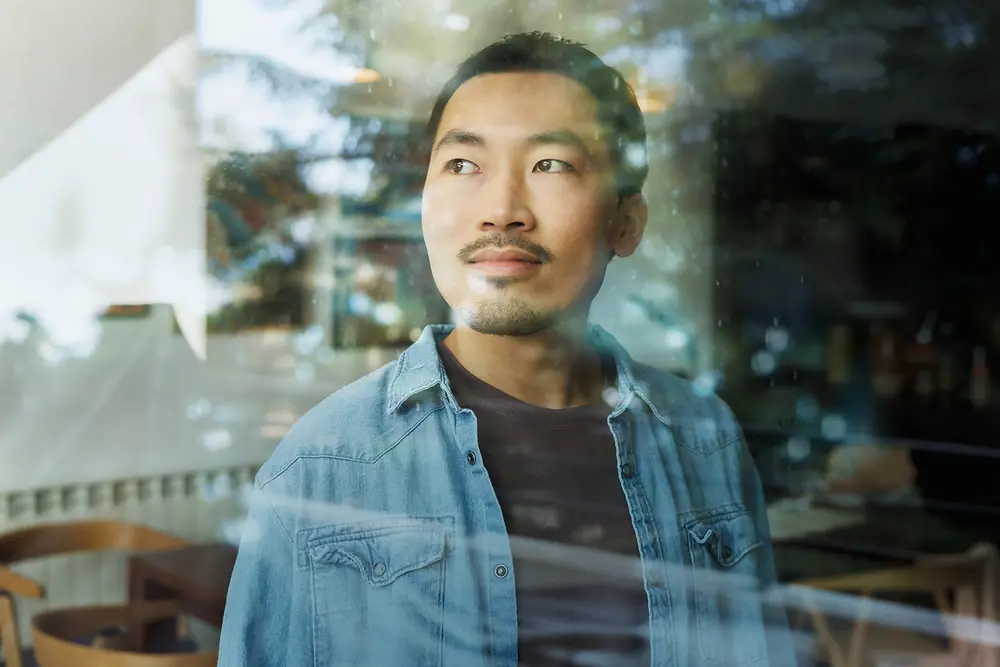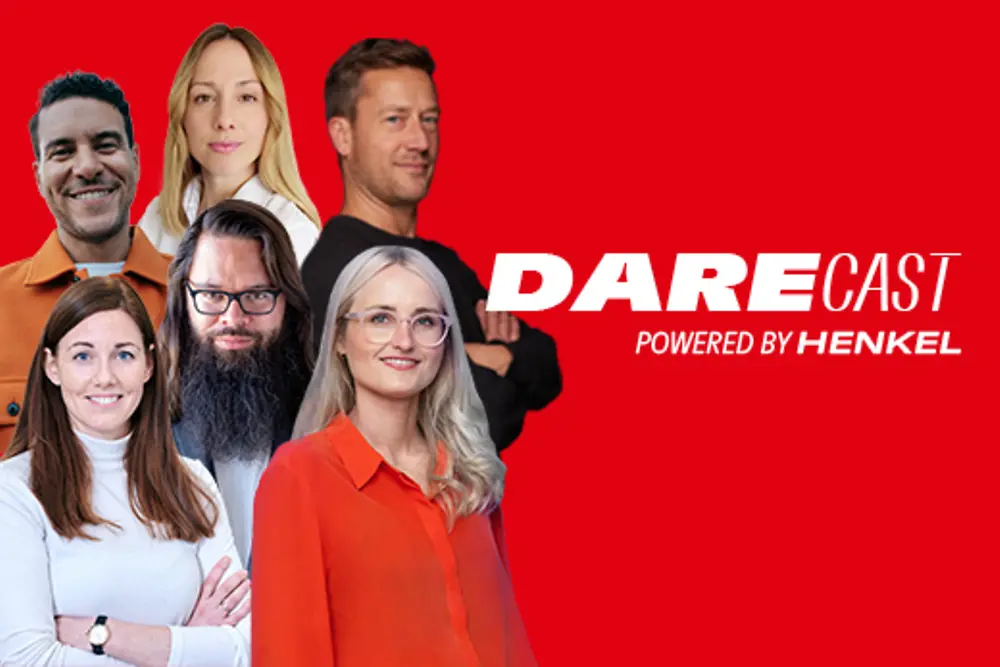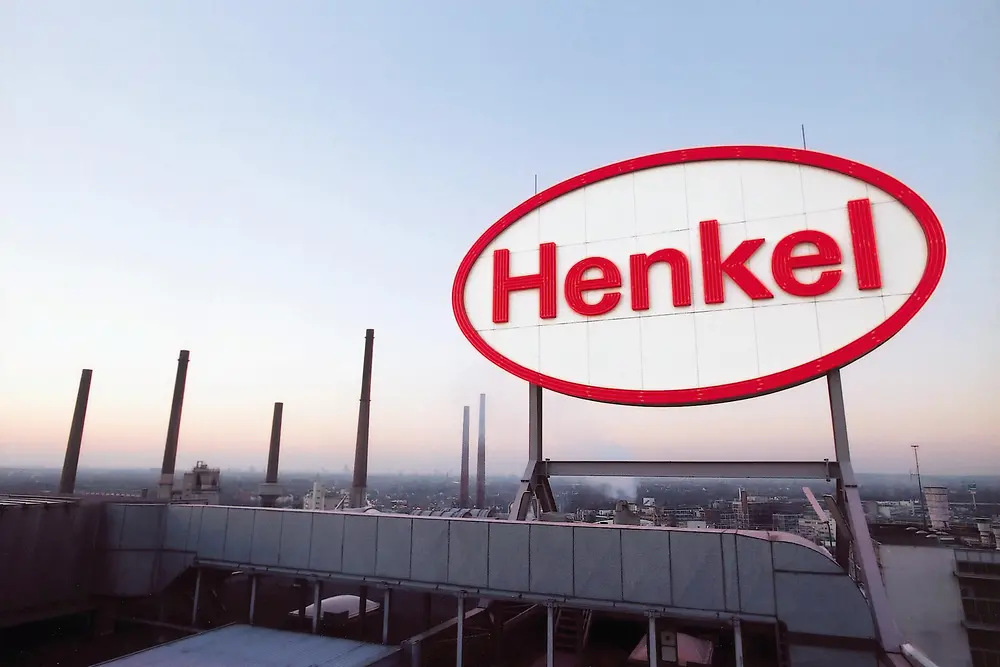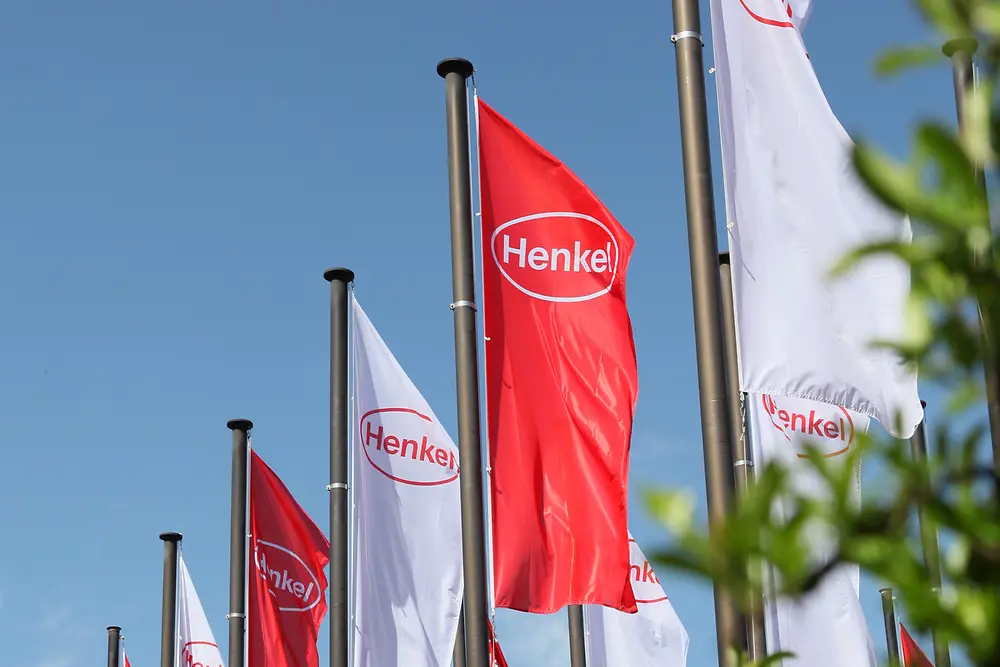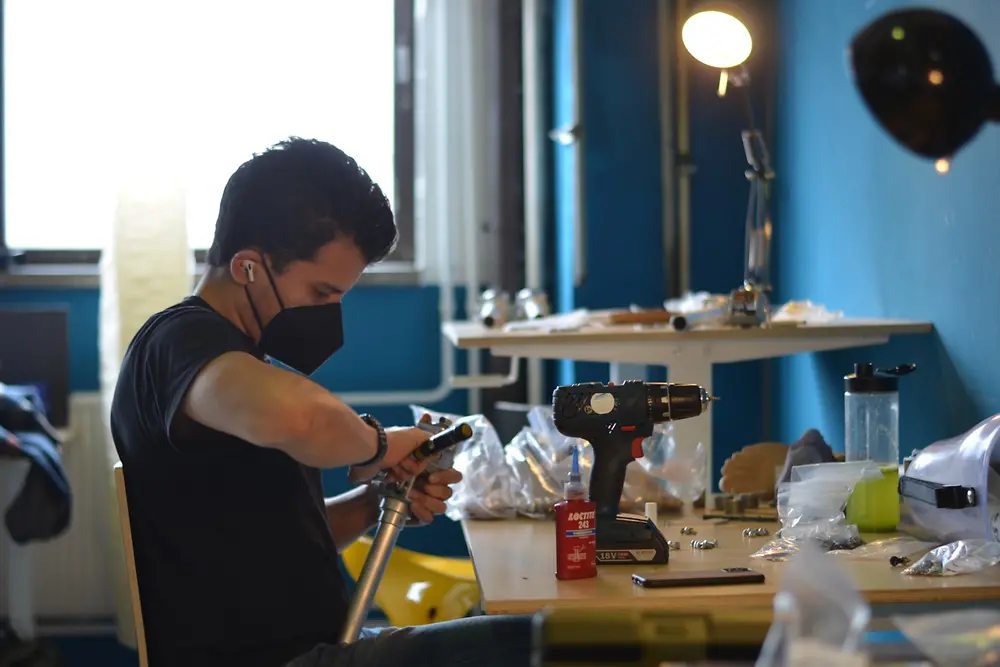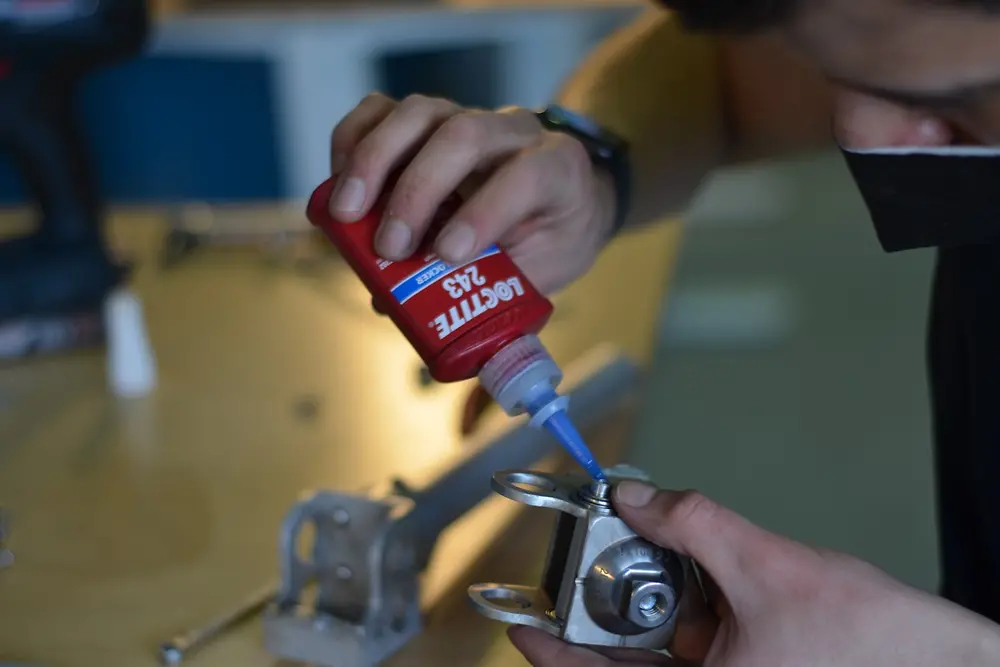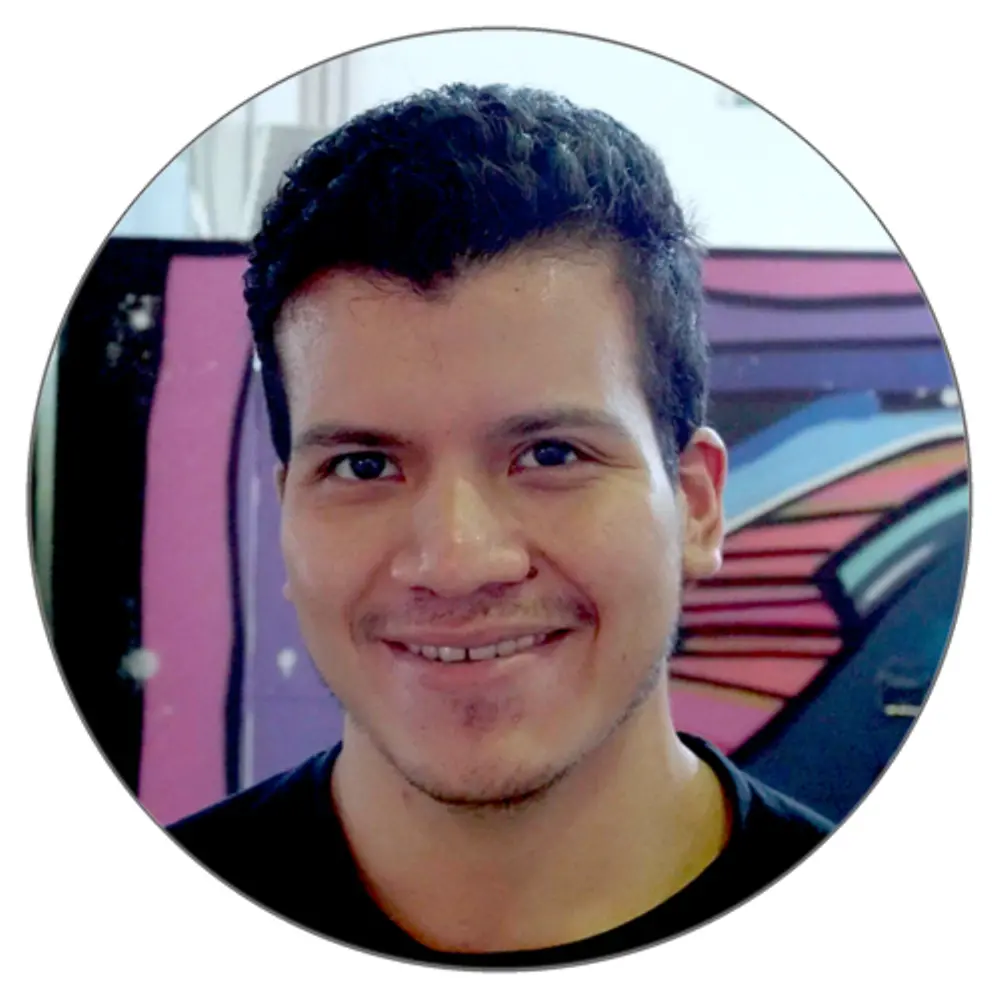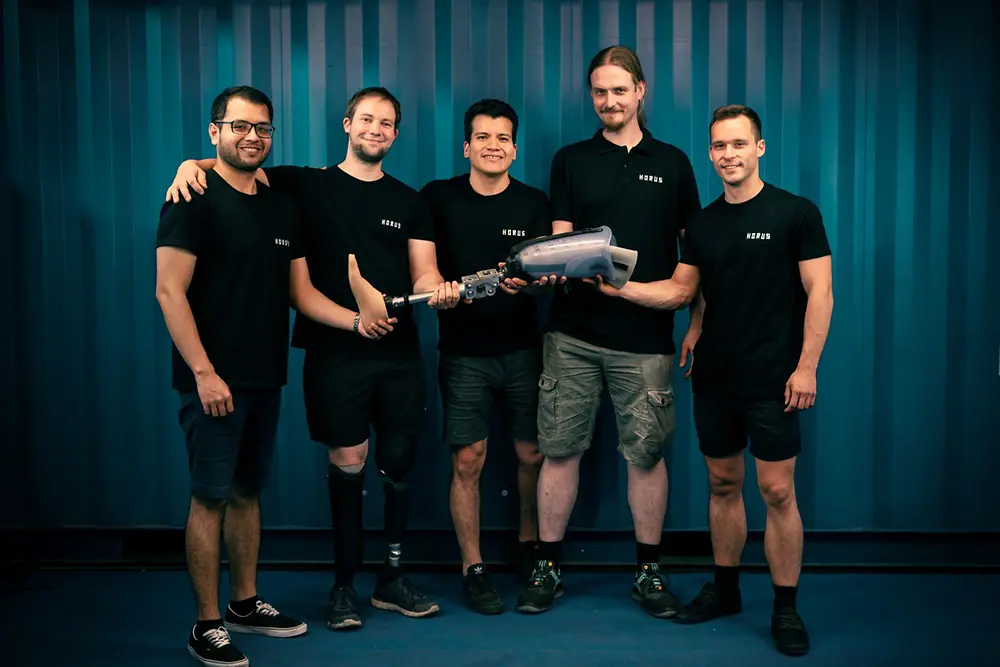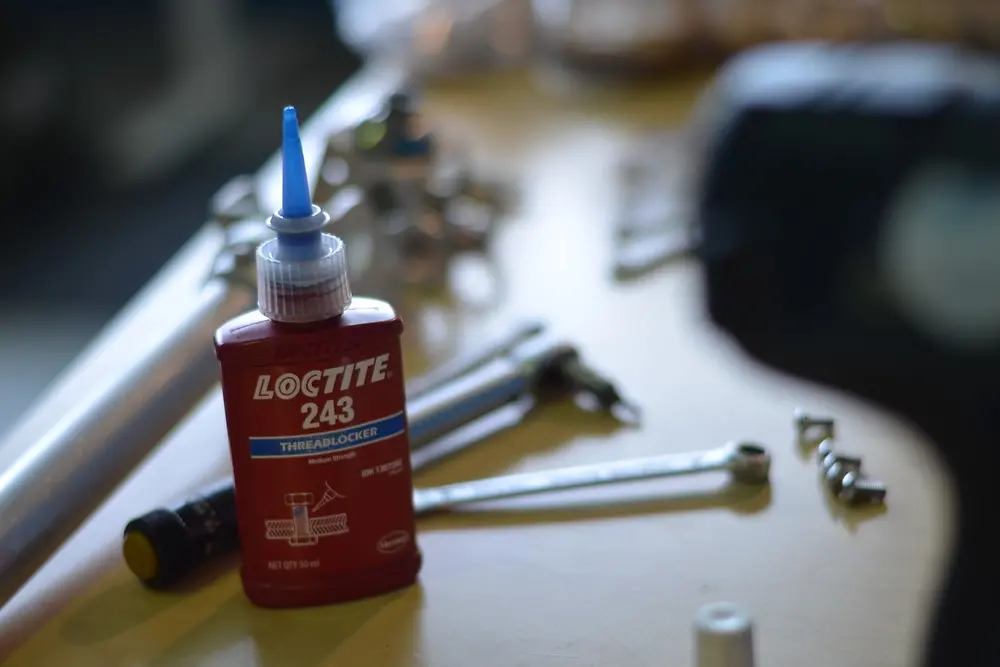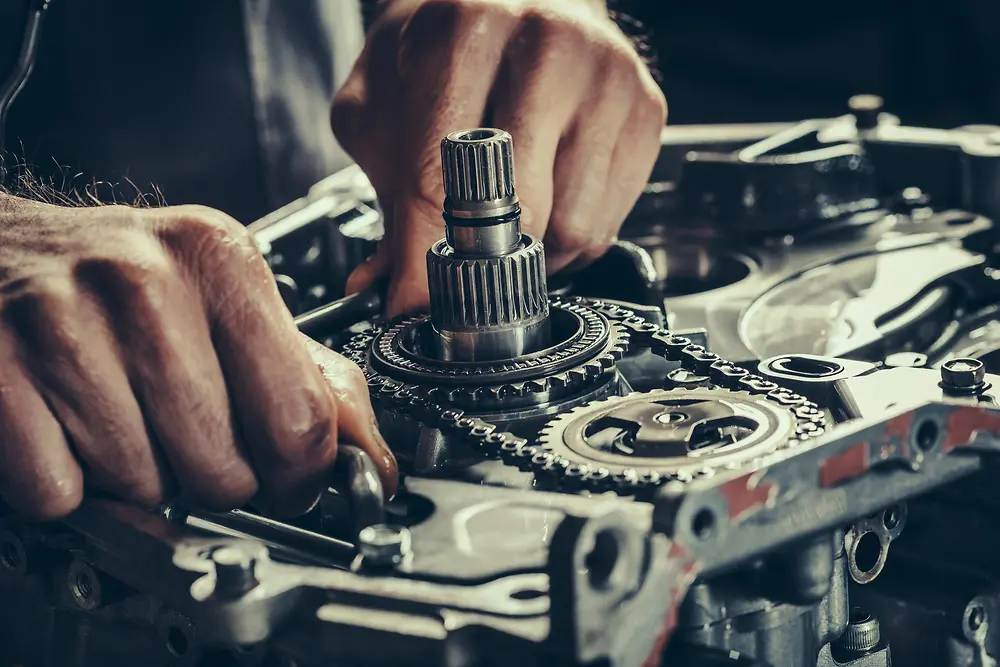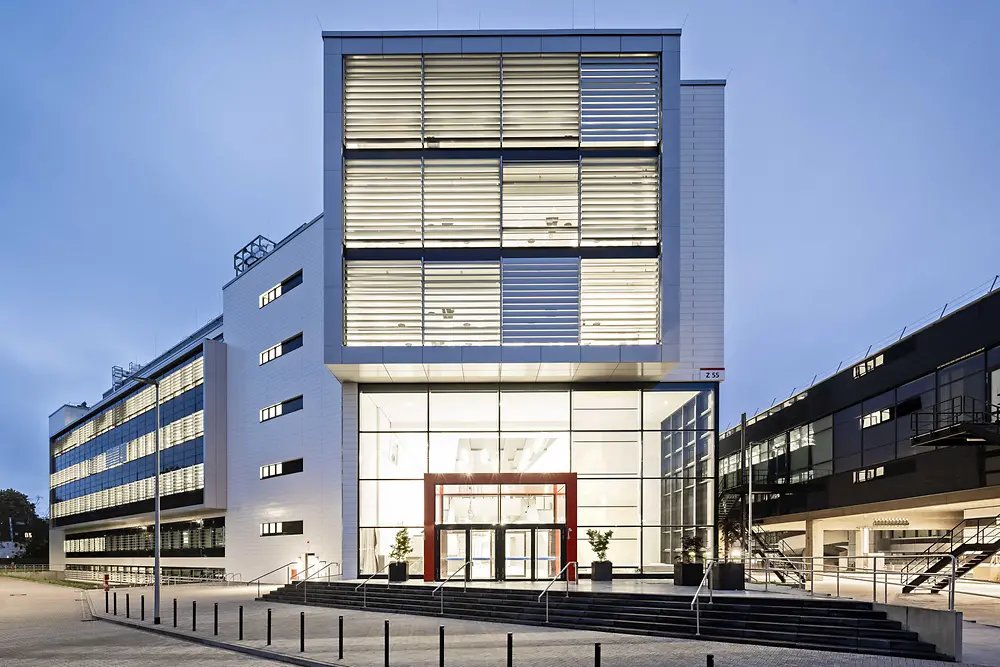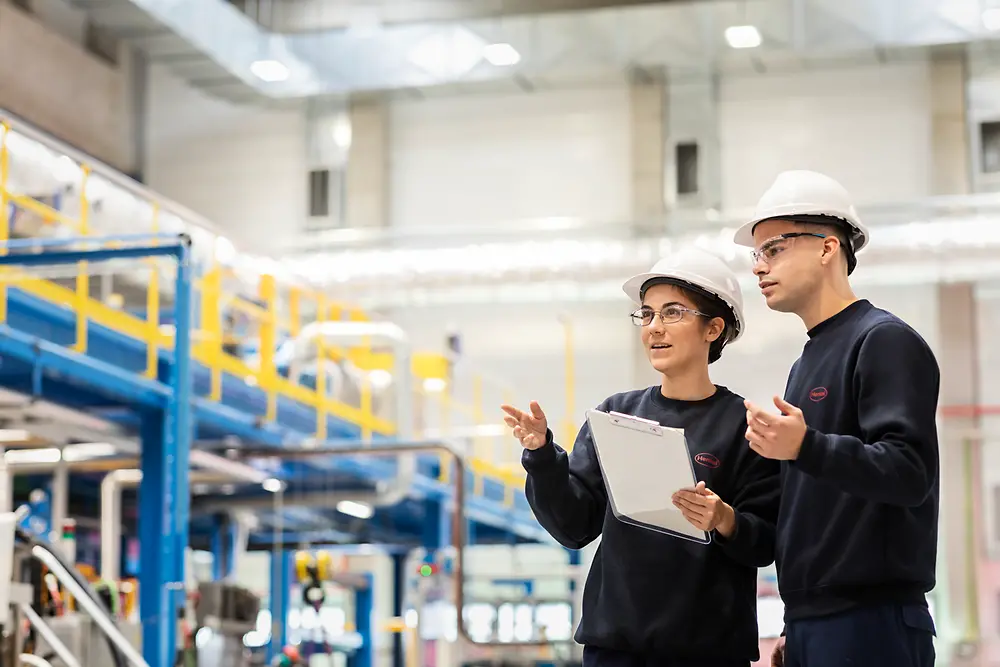Eduardo: It’s nice to see that we are pushing our own vision and we’re proud of what we’ve already accomplished. However, a startup also carries a lot of risk and you don’t see any tangible results, especially in the beginning. You just trust that it will work. That’s not actually logical at all, because you’re relying on something that doesn’t even exist yet and you don’t know if it’s even going to succeed. Nevertheless, we simply believe in it.
The Horus Prosthetics team around founder Eduardo Sotelo.
What makes your prostheses so special and what is your vision with them?
Eduardo: Currently, many prosthetic solutions are being developed mainly for industrialized countries. Our products are well made, affordable and durable, and are designed to enable people in poorer areas to continue living their lives as unrestrictedly as possible and to go to work. Our prosthesis is made up of various individual parts. The heart of the product that we develop and produce is the knee joint. We buy the foot from a company in Upper Bavaria. The managing director has already lived in Ecuador himself, knows the Latin American world and has the same sustainable values and goals as we do. We are working with a company in Berlin to make the leg and would like to introduce the production process in Peru. Producing the socket is much more difficult; mass production is not really possible. This is because each amputation is different and the socket has to be adapted to the person. Thus, each socket is a unique piece that has to be produced on site. To do this, we use a digital process that can be used to create an initial model based on the residual limb measurement.
How do you go about making prostheses that are as cost-effective as possible and still durable?
Eduardo: When sourcing our materials, we look for creative ways and materials that are of good quality yet affordable to keep the price of the prosthesis low. For our knee joint and for the assembly of the individual components, for example, we use adhesive bonding materials to connect the tube to the tube cavity and the deep groove ball bearing to the axle. This is quick and less expensive than drilling or clamping. Another challenge we were able to overcome by using adhesives was reducing the cost of manufacturing the socket. The limb protection is made of silicone and a fabric, the liner, which is very expensive. We found a manufacturer in Germany that makes this material cheaper, but the problem was that the material stretched in width and length. Longitudinal expansion is unacceptable for a prosthesis, as this elasticity would constantly interfere with movement when walking. We ended up using fabric-to-fabric adhesion in the socket and used tape that was glued to the fabric. In this way, we can prevent upward stretching and reduce the cost of the liner. Adhesives therefore help us realize our goal of low-cost prostheses because they are the most economical solution for some connections. In addition, we achieve long-lasting connections that are also lightweight and improve the design.

